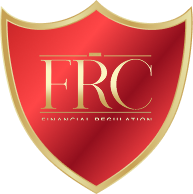The world is experiencing a significant shift towards sustainability, driven by the growing awareness of climate change and the need for cleaner, more reliable energy sources. Renewable energy has become a focal point in this transition, with solar, wind, hydro, and other green energy technologies gaining significant traction globally. As this shift accelerates, renewable energy investments are playing an increasingly important role in wealth management, offering both financial returns and a positive environmental impact.
For wealth managers, incorporating renewable energy into portfolios presents an opportunity to align investment strategies with the growing demand for sustainability. Renewable energy investments can provide strong returns, reduce exposure to traditional, carbon-intensive sectors, and contribute to a greener, more sustainable future. However, integrating renewable energy investments into portfolios requires careful consideration of the specific challenges and opportunities that this sector presents.
In this article, we will explore the role of renewable energy investments in wealth management, focusing on the UK market. We will discuss the financial, environmental, and strategic benefits of incorporating renewable energy into investment portfolios, the types of renewable energy investments available, and how wealth managers can navigate the complexities of this rapidly evolving market.
The renewable energy sector has experienced rapid growth over the past decade, driven by technological advancements, government incentives, and increasing consumer demand for clean energy. According to reports, the global renewable energy market is expected to continue expanding, with substantial investments in wind, solar, and battery storage technologies. For wealth managers, this presents a unique opportunity to tap into a market that not only offers strong financial returns but also aligns with broader social and environmental goals.
In the UK, the government has set ambitious targets to achieve net-zero emissions by 2050, further accelerating the need for sustainable energy solutions. As a result, there has been a surge in interest from institutional investors, private equity firms, and high-net-worth individuals (HNWIs) in renewable energy assets. Wealth managers are increasingly incorporating these investments into their clients’ portfolios, as they recognise the potential for long-term growth and diversification.
Beyond the financial incentives, many clients are motivated by the desire to invest in solutions that contribute to environmental sustainability. Impact investing, which seeks to generate both financial returns and positive social or environmental outcomes, has gained popularity among clients who want to align their wealth with their values.
Renewable energy investments offer a wide range of financial benefits, including attractive returns, portfolio diversification, and the potential for long-term growth. As the demand for clean energy continues to rise, renewable energy companies and projects are poised to benefit from a growing market.
The renewable energy sector is characterised by significant long-term growth potential, driven by both policy initiatives and technological advancements. In the UK, the government’s commitment to reaching net-zero emissions by 2050 and its focus on renewable energy infrastructure has created a favourable investment environment. Similarly, the global trend towards decarbonisation, electrification, and the transition to renewable energy sources is expected to continue driving growth in the sector.
As renewable energy technologies become more efficient and cost-effective, they are likely to become an even more attractive investment option. Solar, wind, and battery storage technologies are already experiencing rapid advancements, which are expected to reduce costs and increase the profitability of renewable energy projects.
Including renewable energy investments in a portfolio can provide valuable diversification. The renewable energy sector is relatively uncorrelated with traditional asset classes, such as equities, bonds, and real estate. By incorporating renewable energy investments into their portfolios, wealth managers can reduce their clients’ exposure to traditional sectors and mitigate risk through greater diversification.
Moreover, renewable energy assets tend to have lower volatility compared to some other sectors, providing investors with a stable source of returns. Renewable energy infrastructure, such as wind farms and solar projects, typically generates steady cash flows through long-term power purchase agreements (PPAs), making these investments an attractive option for wealth managers seeking income-generating assets.
Renewable energy projects, particularly those in established markets, can offer attractive risk-adjusted returns. These assets often benefit from government incentives, subsidies, and feed-in tariffs, which can provide a degree of financial stability and predictability. Additionally, long-term PPAs with utilities or large corporations ensure that revenue streams remain relatively stable throughout the life of the project.
While the renewable energy sector can be capital-intensive and subject to regulatory changes, wealth managers can mitigate these risks through careful selection of assets and investments. Many wealth managers are also opting for renewable energy funds or exchange-traded funds (ETFs) to gain exposure to a diversified portfolio of renewable energy companies, reducing risk and enhancing returns.
Renewable energy assets, particularly those in the infrastructure space, can act as an inflation hedge. Long-term contracts, stable cash flows, and the essential nature of energy services provide a reliable source of income that is less affected by inflationary pressures. As the cost of energy rises, renewable energy projects may benefit from higher power prices, thereby protecting investors from inflation risk.
Wealth managers can offer a variety of renewable energy investment options to their clients, depending on their investment objectives, risk tolerance, and time horizon. These options can range from direct investments in renewable energy projects to more liquid, exchange-traded vehicles. Below are some of the key types of renewable energy investments available to wealth managers:
Direct investment in renewable energy projects involves allocating capital to specific energy projects, such as wind farms, solar farms, or bioenergy plants. These projects often require significant upfront capital, but they can provide steady, long-term returns through the sale of electricity under PPAs. Direct investments can be highly attractive for clients who have a long-term investment horizon and are looking to play an active role in supporting the transition to a sustainable energy future.
However, these investments can also come with higher risks due to factors such as project delays, regulatory changes, and the performance of the underlying technology. Wealth managers should conduct thorough due diligence and consider the expertise of the project developers before recommending these types of investments.
Renewable energy funds pool investors’ capital to invest in a diversified portfolio of renewable energy assets. These funds can invest in a range of renewable energy projects, including solar, wind, hydro, and battery storage. By investing in renewable energy funds, wealth managers can provide clients with exposure to the renewable energy sector without the need to directly manage individual projects.
Renewable energy funds can be structured in various ways, including closed-end funds, open-end funds, or private equity funds. Each structure has different liquidity characteristics, risk profiles, and fees. Wealth managers can choose the most appropriate fund based on their clients’ investment goals and preferences.
Renewable energy ETFs are another popular investment vehicle for wealth managers seeking exposure to the renewable energy sector. These funds track the performance of renewable energy companies, including those involved in the production, distribution, and technology development of renewable energy. Renewable energy ETFs can provide liquidity, transparency, and broad diversification, making them an attractive option for clients looking for passive exposure to the sector.
ETFs that focus on renewable energy can offer exposure to both large, established companies and smaller, high-growth firms, allowing wealth managers to build diversified portfolios tailored to their clients’ risk tolerance and investment objectives.
Green bonds and sustainable infrastructure funds are fixed-income instruments designed to fund environmentally sustainable projects, including renewable energy infrastructure. By investing in green bonds, clients can support renewable energy projects while receiving regular interest payments. These investments are typically issued by governments, corporations, or development banks and are backed by specific environmental projects.
Sustainable infrastructure funds, on the other hand, invest in a broader range of infrastructure projects, including renewable energy, energy efficiency, and sustainable transportation. These funds can offer clients exposure to a wide array of green assets, combining the benefits of both income generation and environmental impact.
Wealth managers play a critical role in helping clients navigate the renewable energy investment landscape. As the market for renewable energy investments evolves, wealth managers must stay informed about the latest trends, technologies, and regulatory changes that could impact their clients’ portfolios.
Wealth managers can help clients build a diversified portfolio that includes renewable energy investments in line with their overall financial goals. By considering factors such as risk tolerance, investment horizon, and desired impact, wealth managers can tailor their clients’ portfolios to reflect their unique preferences and objectives.
Additionally, wealth managers can advise clients on how to balance renewable energy investments with other asset classes to achieve optimal risk-adjusted returns. Given the long-term nature of many renewable energy projects, wealth managers must consider the time horizon and liquidity needs of their clients when making recommendations.
Due diligence is a critical aspect of investing in renewable energy. Wealth managers must conduct thorough research on potential investments, including assessing the financial stability of developers, the performance of underlying technologies, and the regulatory environment. For direct investments, wealth managers must assess project risks, such as construction delays, permitting issues, and potential changes in government policy.
While renewable energy investments can offer attractive returns, they are not without risks. Wealth managers must carefully assess the risks associated with each investment, including market volatility, technological risks, and regulatory changes. By diversifying investments and conducting comprehensive risk assessments, wealth managers can help clients navigate the complexities of the renewable energy market and reduce exposure to potential losses.
While the renewable energy sector offers numerous opportunities, it also presents several challenges for wealth managers and investors.
The renewable energy sector is subject to changing government policies, subsidies, and regulations. Wealth managers must stay informed about policy developments and potential changes to tax incentives, subsidies, or environmental regulations that could impact the profitability of renewable energy investments.
Technological risks, including the potential obsolescence of certain energy technologies or the failure of emerging technologies to reach commercial scale, are a concern in the renewable energy sector. Wealth managers should consider the maturity of the technologies involved and assess the potential risks associated with new, unproven technologies.
Renewable energy projects often require significant upfront capital, which can present a barrier to entry for some investors. Wealth managers must assess the capital requirements and funding options available for renewable energy investments to ensure that clients are adequately positioned to participate in these opportunities.
Renewable energy investments are becoming an increasingly important part of wealth management, offering both financial and environmental benefits. As the demand for clean energy continues to grow and governments around the world commit to achieving net-zero emissions, wealth managers have a unique opportunity to help their clients align their financial goals with sustainability.
By incorporating renewable energy investments into portfolios, wealth managers can offer diversification, attractive risk-adjusted returns, and a positive environmental impact. However, investing in renewable energy also comes with challenges, including regulatory uncertainty, technological risks, and capital intensity.
Wealth managers must stay informed about the latest developments in the renewable energy sector and conduct thorough due diligence to help clients navigate this complex market. By doing so, they can provide their clients with valuable opportunities to invest in a sustainable future while achieving strong financial returns.
Be the first to know about new class launches and announcements.


Financial writer and analyst Ron Finely shows you how to navigate financial markets, manage investments, and build wealth through strategic decision-making.
